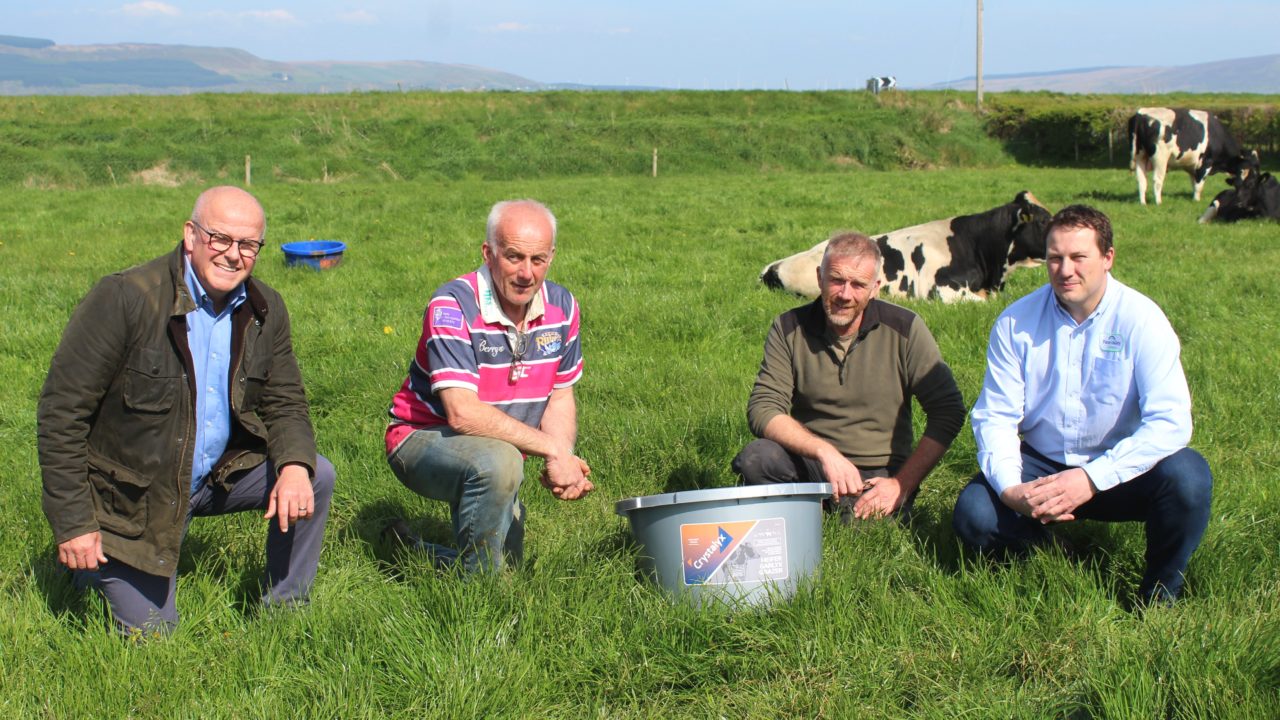Consider the following supposition: If grazing paddocks can be managed on the basis of a 21-day rotation, why can’t silage management be approached on the same basis?
This was a question that brothers Robert and Thomas Craig committed to finding an answer to last year – and they came up with some very interesting answers indeed.
The brothers milk 260 cows near Limavady in Co. Derry. Robert’s son Alistair is also involved in the business.
Together, they milk 260 pedigree Holsteins on flat, free-draining land, a high proportion of which is below the level of the nearby Foyle Estuary. As a consequence, an elaborate system of drains and pumps is used to keep the sea water out.
Most of the land available to the Craigs is suitable for both grass growing and cropping. The soils are of a sandy loam type.
An extensive layer of sea shells, which kicks-in 6in or thereabouts below the surface of the soil, forms a natural drainage system throughout the farm.
Given these natural advantages, the Craigs avail of the opportunity to grow as much of the grass and cereals as they can to meet the nutritional needs of the cows and youngstock. Recently, Lucerne has been added to the cropping rotation followed on the farm.
“The cows are currently averaging 10,000L. Butterfats are in the region of 4.2% with protein coming in at 3.4%,” Robert explained.
“Total milk solids are about 12.8%. We are always looking at ways of maximising the levels of solids in the milk, particularly while the cows are at grass.”
Six cuts of silage
At the beginning of 2021 Robert, Thomas and Alistair made the conscious decision of committing to six cuts of silage across the farm.
“This approach took-in the grassland area, plus the lucerne and wholecrop barley that would be also be available,” Robert explained.
“We have the equipment available to make this happen, which meant that we could undertake the work required at the most appropriate times. Our aim was to see what difference such an approach would take, particularly where our grass silages are concerned.”
The other fundamental decision taken by the family members was that of spreading liquid nitrogen fertiliser on to the grassland area.
“We had been re-assured that by taking this approach, all the nitrogen in the fertiliser would be converted to plant protein within a much faster period of time than had we gone out with a standard compound or blend,” Thomas said.
“The results that we achieved were truly remarkable. Our silages last year had a protein content averaging 17.9%.
“A standard silage analysis can normally only measure protein values up to 12%.”
Reducing on-farm costs
By taking this approach, the Craigs were able to significantly reduce the levels of bought-in concentrates offered to their cows last winter.
“Over a 220-day feeding season, we were able to take out 150t of barley, pre-mix and parlour nuts,” said Robert.
“Admittedly, it was a balancing act. Milk volumes dropped by 90,000L and when I factored in the actual prices for barley and bought in concentrates, the total cost increased by £3,000.
“However, the value of the overall milk cheque rose by £10,000. So overall we came out of it quite well.”
Another ‘profitable’ decision taken by Robert, Thomas and Alistair in 2021 relates to the management of their replacement heifers.
“Up to last year, we weren’t happy with the conception rates that we were achieving while these animals were at grass,” said Thomas.
“We routinely use sexed straws on our replacements. And obviously, we wanted to get the best possible return on this investment.”
As a means of addressing this issue, the decision was taken to put Crystalyx Cattle Booster buckets out with the replacement heifers at grass.

“The results were more than significant,” Robert confirmed.
“The 2021 scanning results confirmed that conception rates with the heifers had risen significantly.
“The only management change that we made was the placement of the feed blocks out with the stock.”
This year, the Craigs will again put the Crystalyx feed blocks out with the heifers. This will include the use of the new Crystalyx Heifer Garlic Grazer buckets.
“Flies can be a real problem in this area during the summer months,” Robert confirmed.
“Losing a quarter to dry felon is both annoying and disappointing. We have used garlic in the past in order to keep the flies at bay. And we will be using the new Crystalyx Heifer Garlic Grazer with this aim in mind throughout the 2022 grazing season.”

The Craigs source all their Crystalyx products from the nearby Fane Valley store.
“Demand for the entire range of Crystalyx feed blocks continues to increase in this catchment area,” said store manager Keith Nesbitt, who was a recent visitor to the farm.
“The products have a proven track record of allowing stock to make best use of grass and other forages.”
To shop Crystalyx products, or for more information, click here.

